Click on images to enlarge

infestation (Photo: Trevor James)
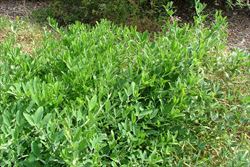
habit (Photo: Sheldon Navie)
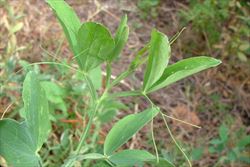
leaves, each with two leaflets and three-branched tendrils (Photo: Sheldon Navie)
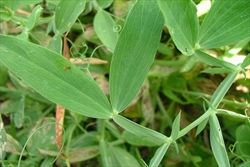
close-up of winged stem and leaves (Photo: Sheldon Navie)
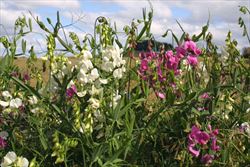
flower clusters (Photo: Trevor James)

close-up of pea-shaped flower (Photo: Trevor James)
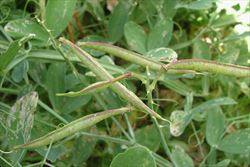
immature fruit (Photo: Sheldon Navie)
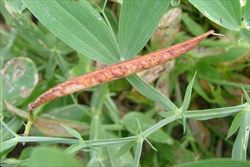
mature fruit (Photo: Sheldon Navie)

close-up of seeds (Photo: Steve Hurst at USDA PLANTS Database)
Scientific Name
Lathyrus latifolius L.
Synonyms
Lathyrus sylvestris L. subsp. latifolius Bonnier & Layens
Family
Fabaceae (Queensland, the ACT, Victoria, Tasmania, and the Northern Territory)Fabaceae: sub-family Faboideae (New South Wales)Leguminosae (South Australia)Papilionaceae (Western Australia)
Common Names
broad leaved everlasting pea, broad-leaved everlasting pea, broad-leaved everlasting-pea, everlasting pea, everlasting sweetpea, perennial pea, perennial pea-vine, perennial sweet pea, sweet pea, sweet-pea, wild sweet pea
Origin
Native to north-western Africa (i.e. northern Algeria, Morocco and Tunisia) and southern and eastern Europe (i.e. France, Portugal, Spain, Albania, Bulgaria, Greece, Italy, Romania, Yugoslavia, Austria, Czechoslovakia, Hungary, Poland, Switzerland and southern Ukraine).
Naturalised Distribution
This species is widely naturalised, but has a scattered distribution, in southern and eastern Australia. It has been recorded in south-eastern Queensland, many parts of eastern New South Wales, the ACT, Victoria, south-eastern South Australia and south-western Western Australia. Also naturalised on Lord Howe Island and possibly naturalised in Tasmania.
Widely naturalised overseas in South Africa, parts of Asia, New Zealand, Hawaii, the USA, Mexico and South America (i.e. Argentina and Uruguay).
Notes
Perennial pea (Lathyrus latifolius) is regarded as an environmental weed in Victoria and on Lord Howe Island, and as an emerging or potential environmental weed in Tasmania and Western Australia. This species is cultivated as an ornamental and is mainly a weed of disturbed sites and areas around habitation (e.g. old settlements and roadsides). However, it has also invaded natural habitats and conservation areas in many parts of Australia.
In Western Australia, perennial pea (Lathyrus latifolius) grows in open woodlands and damp depressions in the wetter south-west of the state, from Dwellingup to Pemberton. It has also been recorded in conservation areas in Victoria (e.g. Mount Eccles National Park and Mount Napier State Park) and South Australia (e.g. Cleland Conservation Park, Horsnell Gully Conservation Park, Scott Creek Conservation Park, Black Hill Conservation Park and Angove Conservation Park).
On Lord Howe Island, perennial pea (Lathyrus latifolius) is listed as an invasive plant that is targeted for eradication. It also appears on some local environmental weed lists in southern Victoria (e.g. in Cardinia Shire and the Shire of Yarra Ranges).

